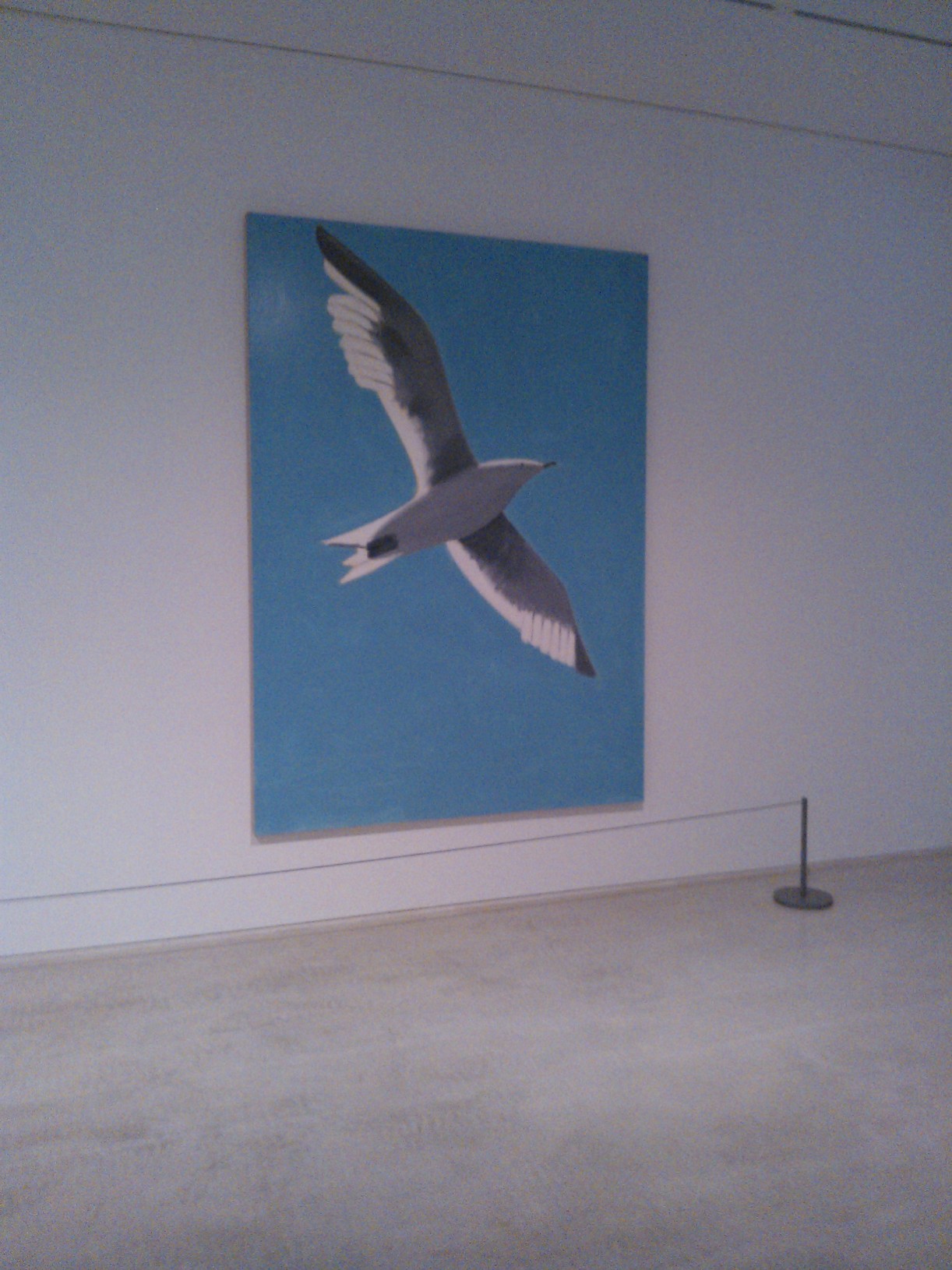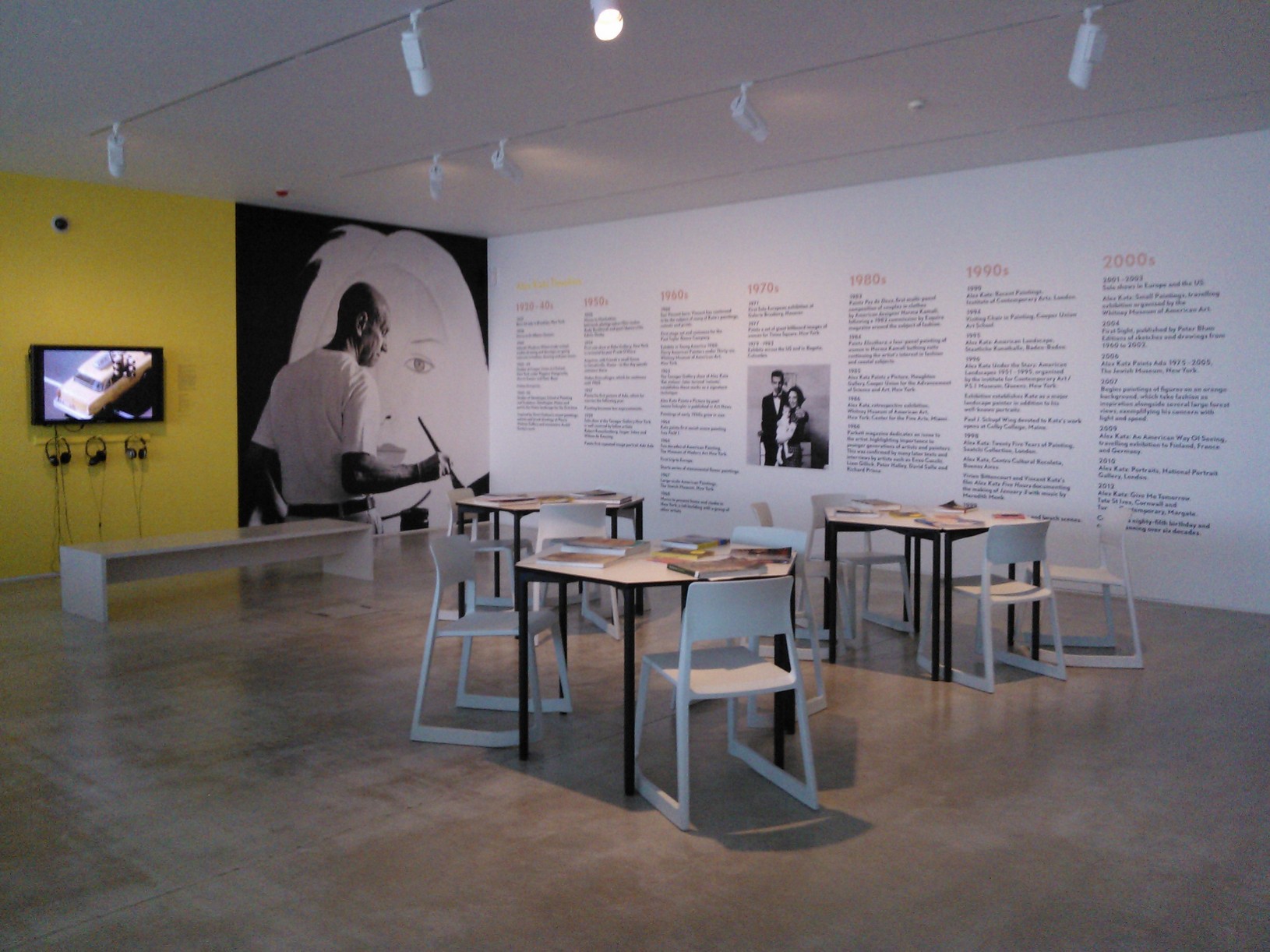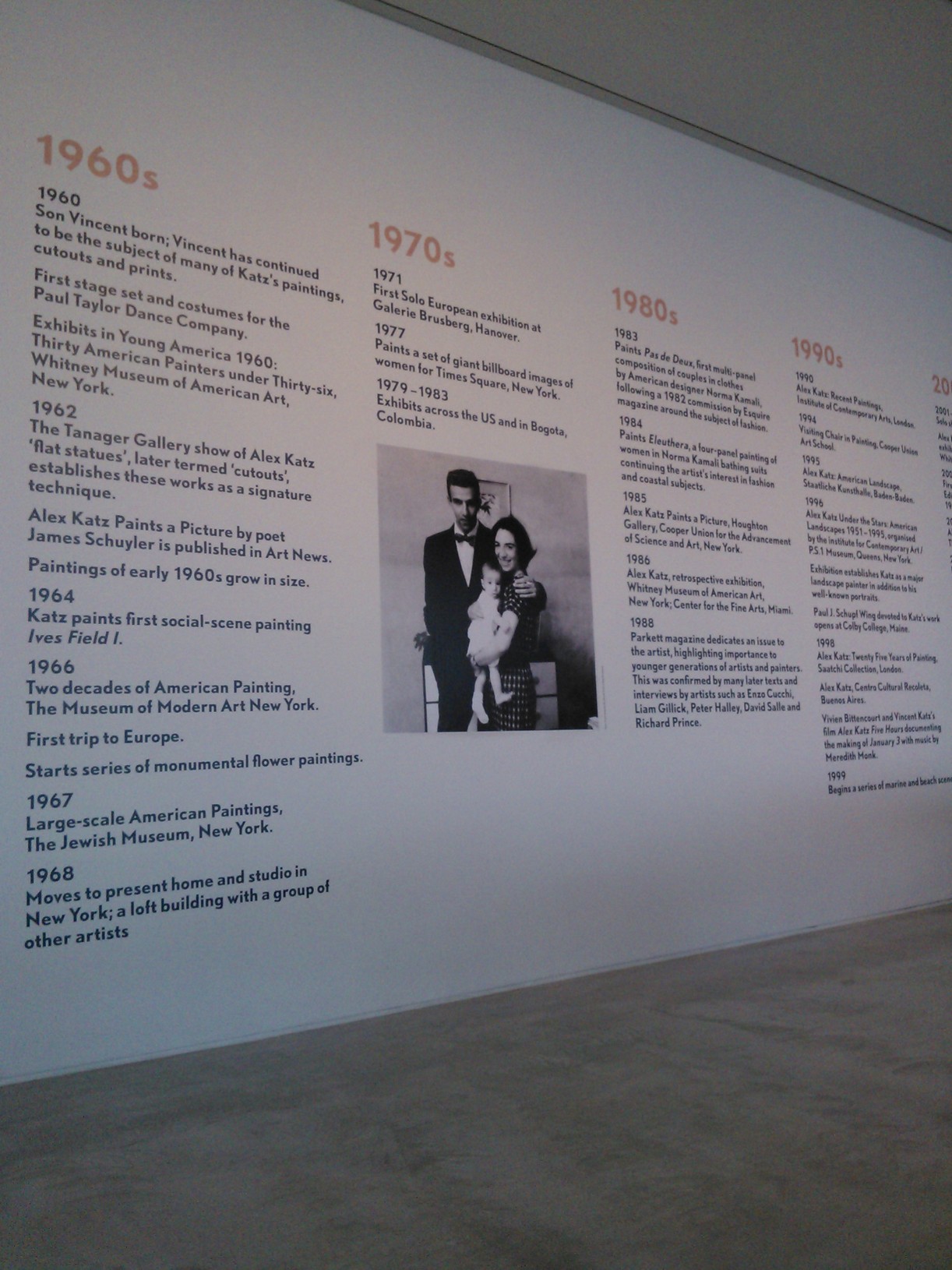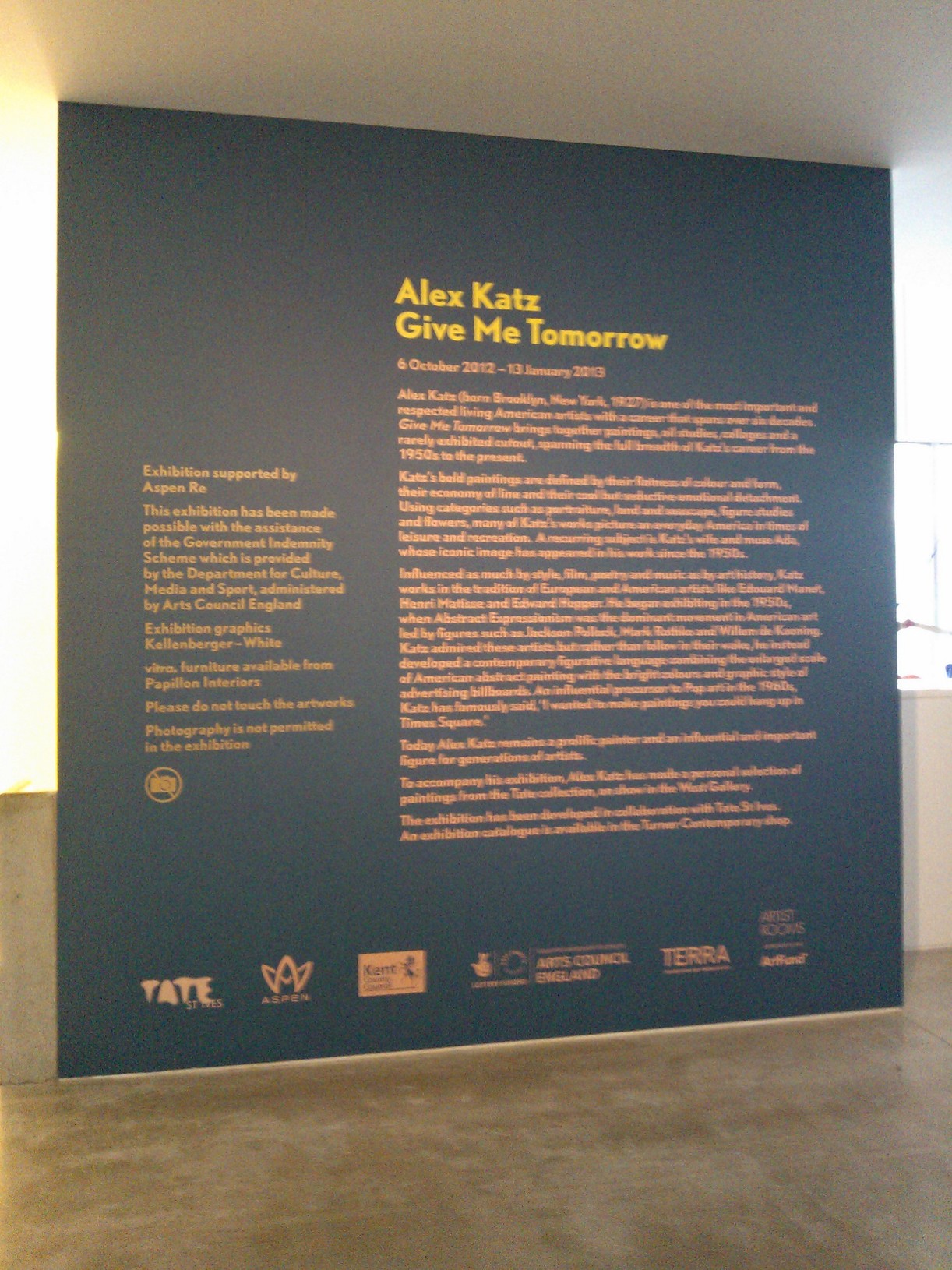Give Me Tomorrow. Alex Katz. Turner Contemporary, Margate
Alex Katz's solo exhibition, Give Me Tomorrow, in Margate is the second seaside outing for the artist this year. A collaboration between Tate St. Ives and Turner Contemporary, the exhibition travelled from the Cornish venue to Kent in October this year. Give Me Tomorrow focuses, due to both the exhibition locations on his beach and landscape/water paintings and although the work is largely the same between the venues (with some slight variations) the two iterations could not, strangely, feel more different. Having seen the two shows rather unintentionally, one during The Penzance Convention and the other during a visit to Margate's Crate Project Space – it was surprising after feeling completely nonplussed by the Tate exhibition to fall a little in love with it at Turner Contemporary. This, however, is the beauty of travelling exhibitions – the ability for the curator or institution or artist even, to re-assess and the opportunity the viewer to reconsider.
Give Me Tomorrow is made up of several different components and/or projects. A key part of the collaboration with Tate has been a personal selection by Katz of paintings from the Tate Collection. These include works by Howard Hodgkin, Gary Hume and Walter Sickert amongst others and form a kind-of small accompanying exhibition. The relationship between the collection and Katz's work has much greater fluidity at Turner Contemporary simply by being hung all on the same floor unlike Tate. The opportunity for Katz to get his hands on the Tate Collection must, undoubtedly have been one of the perks of this collaboration. Katz is a prolific exhibitor, with at least four other exhibitions (two of these solo projects) running concurrently all over the world in 2012 (the year he turned 85) and at least two large-scale solo endeavours planned for next year. He shows no sign of slowing down and has been very present and engaged with the exhibition process and related events. At Tate St. Ives he both spoke in conversation with curator Martin Clark and gave a lecture at University College Falmouth and in Margate the exhibition was opened by Katz himself and followed by a public conversation with Matthew Collings.
Another component of the exhibition are twenty small works that make up Katz's contribution to the Artists Rooms project. The collection of over 720 works gifted by gallerist and dealer Anthony d'Offay is administrated by Tate and National Galleries Scotland and groups artists work together into 'rooms' or small collections that are then toured or loaned. Katz's works, which could be seen as studies for the larger paintings are made by Katz in the open air. They are looser and messier, rather like polaroid shots into Katz's daily life and interests. Winter Branch (1993) shows spindly jagged frost-covered lines like Robin tracks in the snow, more abstracted is West Palm Beach (1997) – watery white, yellow and orange light reflected on dark night water. Both creepy and endearing is a portrait of Kate (1994) whose smile is pulled in a clownish triangle. These small paintings, all measuring approximately 40 x 30 cm give an insight into his painterly processes, blocked colours, simple lines, human forms reduced to shape. The smaller paintings also show a side of Katz's work that is not so flat, not so studied or captured.
Flatness is a defining feature of Katz's painting, especially in his depiction of people. Friends, family, colleagues and interesting strangers are consigned for ever to be part of the surface plane of the painting, their shape and angles subsumed into the overall composition. In the world of Katz, a swimming cap, a mountain, a seaside pier – all have equal personality and definition. A funny and democratic anti and anthropomorphism. Interestingly, when the surface forms really jump out from the canvas it is with the paintings that feature no people at all, for example in the white-dashed glitter of the surface of the mudded green lake or the blobbed yellow blood cells floating about with flowers in Homage to Monet 9 (2009). Katz's people, however, do not loose their humanity. The illustrative quirkiness of their features - a sloping shape of an eyebrow, the cock of a head - allows them to live and breathe. The artist has a brilliant knack of simultaneously muting the sexuality of the characters and heightening it. In Eleuthera (1982) the breast of the woman on the right-hand side panel seems to fall half out of her red swim-suit, her suit rides improbably high on her hips, but the simplicity of the rendering, a simple curved line, mean the view is not salacious.
In the North Gallery, a cut-out of rowers painted in oils on aluminium, Coleman Pond (1975), seems like prop from a Katz themed theatre show. The cut-outs look to be hanging in mid air but are mounted onto thin metal armatures in the centre of the gallery providing overlaps to how you view the various works in this space. This works particularly well with the proud and colourful beach girls of Eleuthera (1982) who, if you stand in the right place, gaze giantly through the boats . The mix of different scales and the reflections, the flatness of the women and the flat 3D reflections of the both work to stimulate new readings of both works. There are, elsewhere, moments of real clarity and genius in the hanging of the works, for example Seagull (2010), an oil on linen, is framed cleverly in the doorway of the tricky corridor space in the centre of the main Turner Contemporary galleries. The galleries at Turner, with so much space, light and height, seem to leave the individual paintings far more space to exist independently, free from a jumbled association. The viewer can fall into the surface, be enveloped by it.
Given the importance of printing to Katz's practice (his website is comprehensive and it is well worth browsing through his print back catalogue specifically) it seems fitting that there are several small size affordable prints available to buy unframed for £5 - Black Hat (Bettina) from 2010, Seagull (2010) and Eleuthera (1984). The Seagull is an obvious but absolutely perfect image for both Turner Contemporary and St. Ives - simple, beautiful, classic.
The exhibition title, Give Me Tomorrow, comes from a work Katz made for a 2005 Creative Time public art project. The work, which was located on the Bowery in New York City for two months, measured 28 feet in height and stretched 53 feet across. Painted by sign painters, the image shows two men, one gazing at another who is either asleep, dead or in anticipation for the potential kiss that is to come. It would have been fantastic to see a similarly public and highly visible work on the façade of Turner Contemporary, perhaps big enough for the ships sailing past to see. The title seems to be a wish, a plea, a demand by Alex Katz - Give Me Tomorrow.
Give Me Tomorrow runs until January 13.
Alex Katz on Painting: Masterpieces from Tate runs until January 20.
Prints from Give Me Tomorrow will be available to buy after January 20 from http://www.culturelabel.com/shop/t/turner-contemporary








